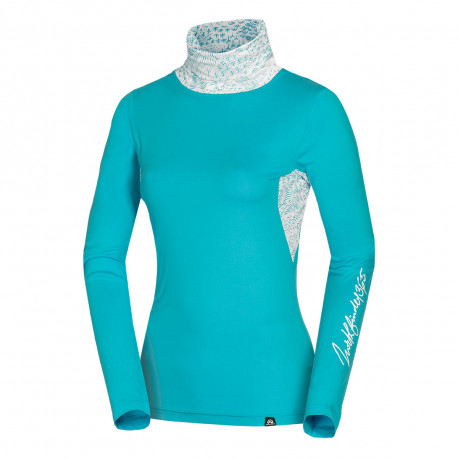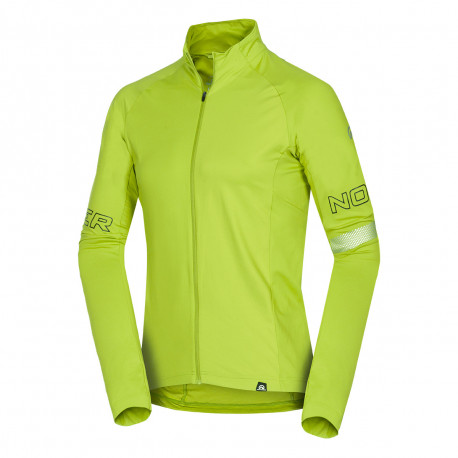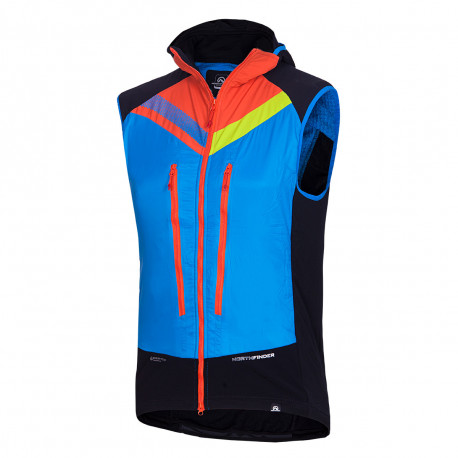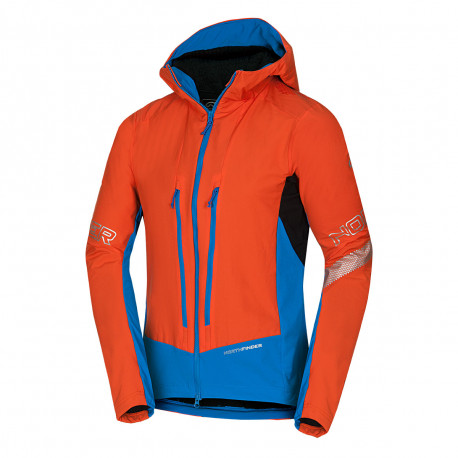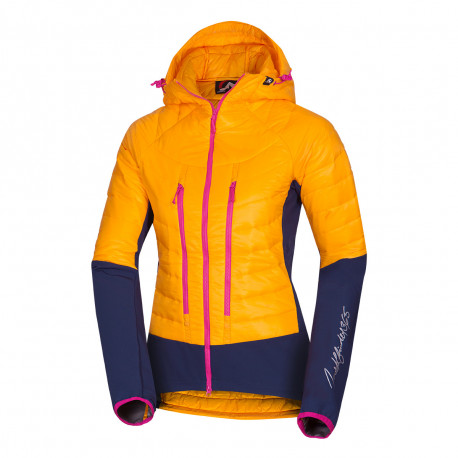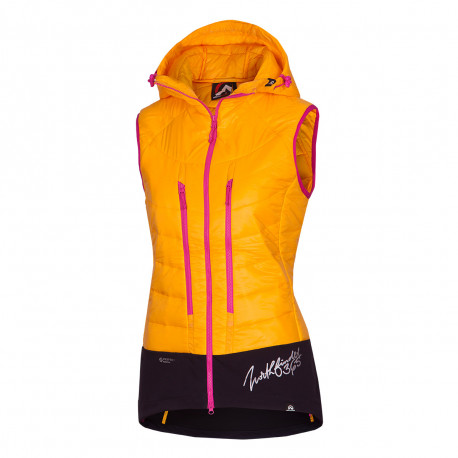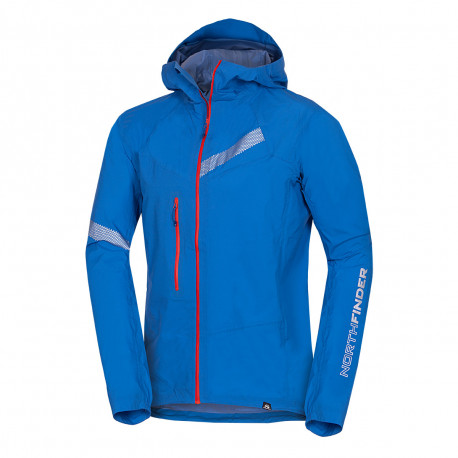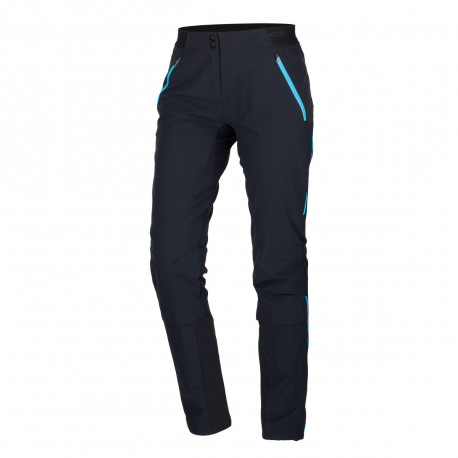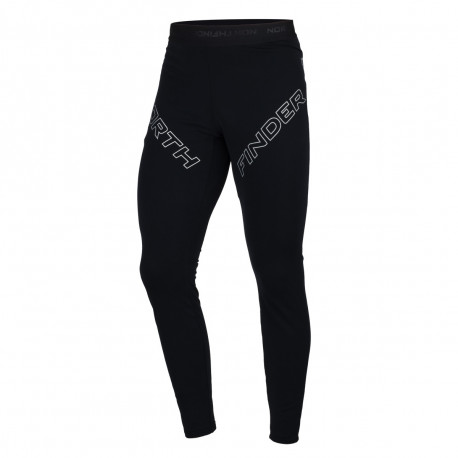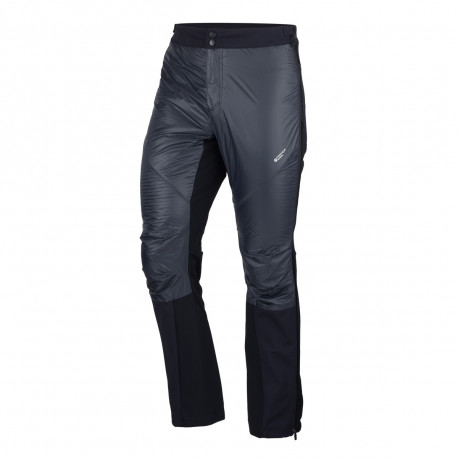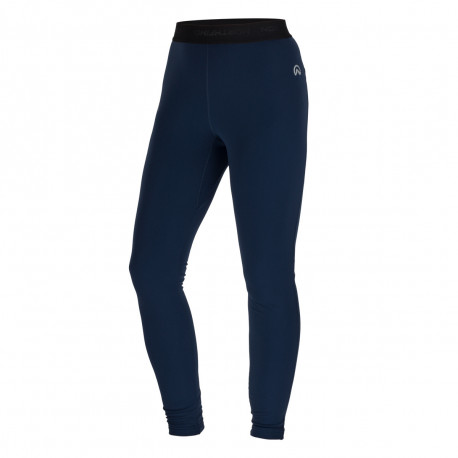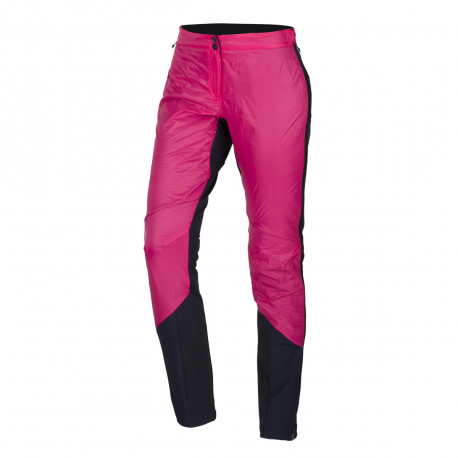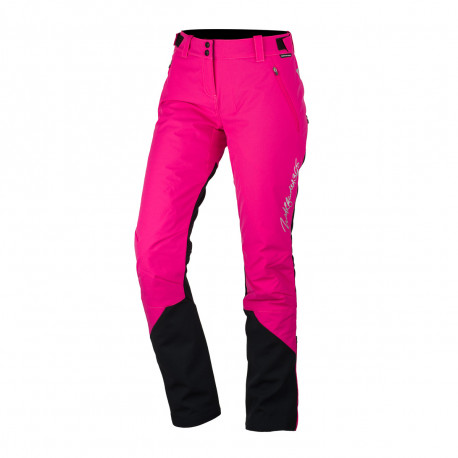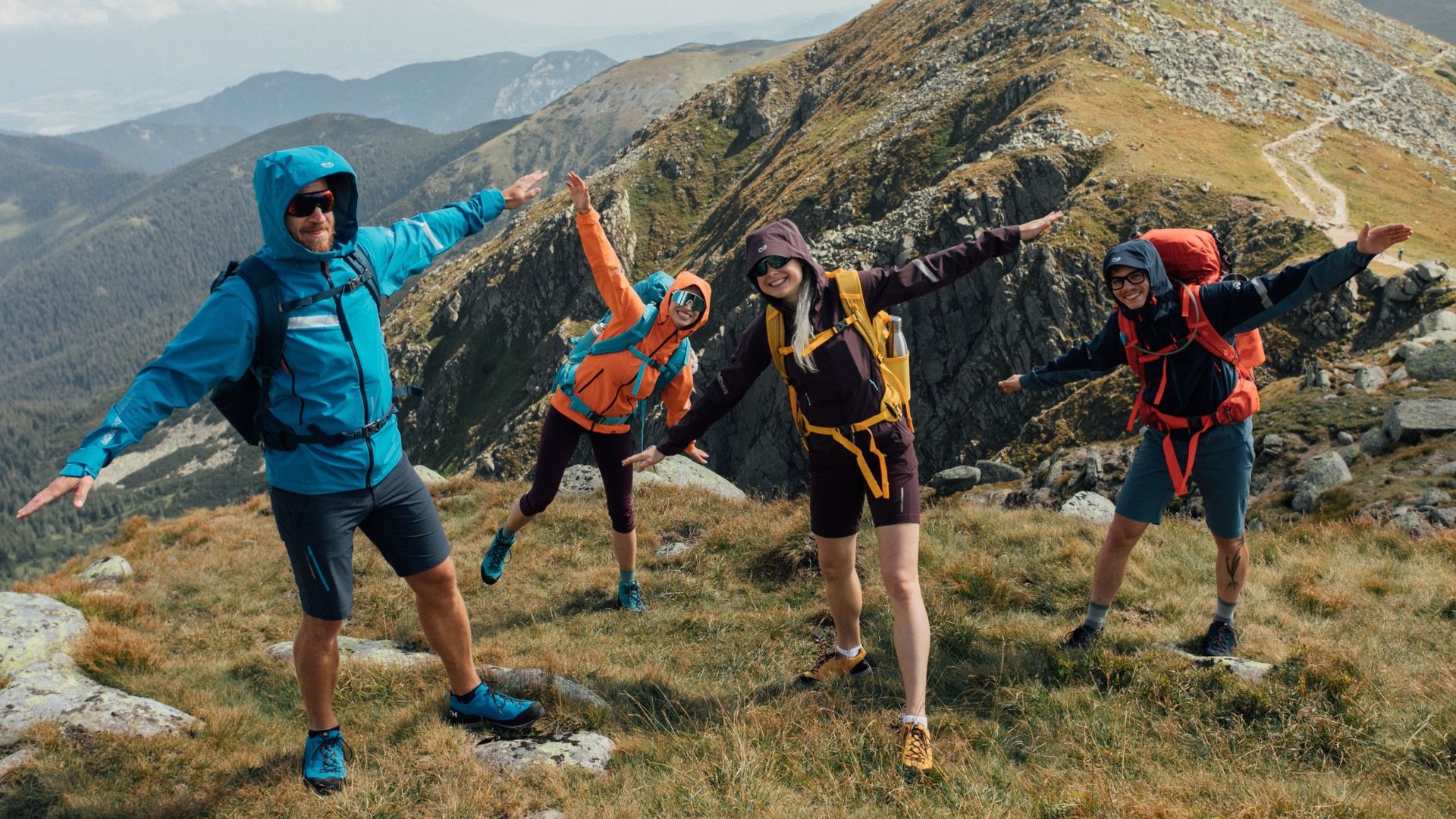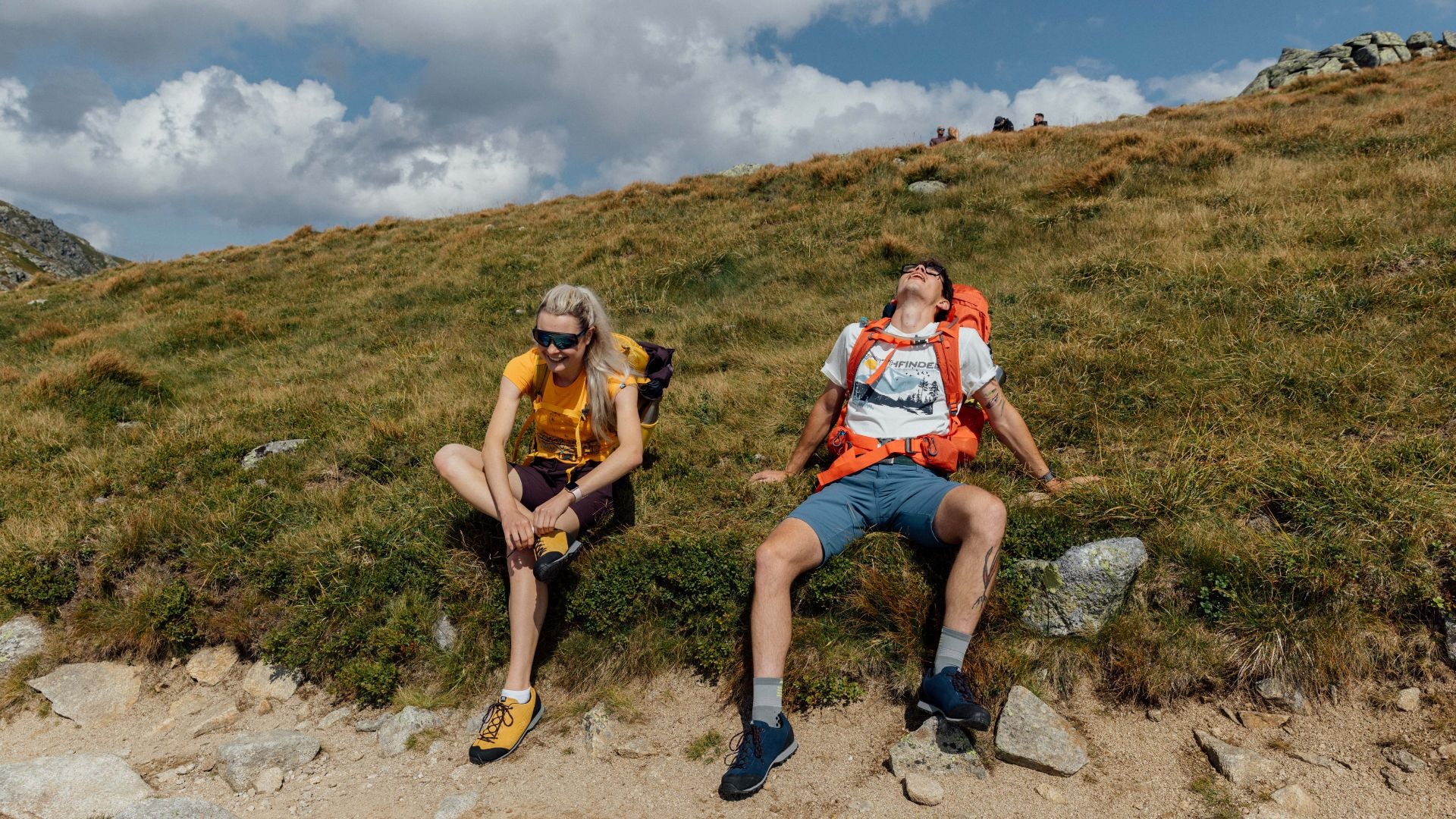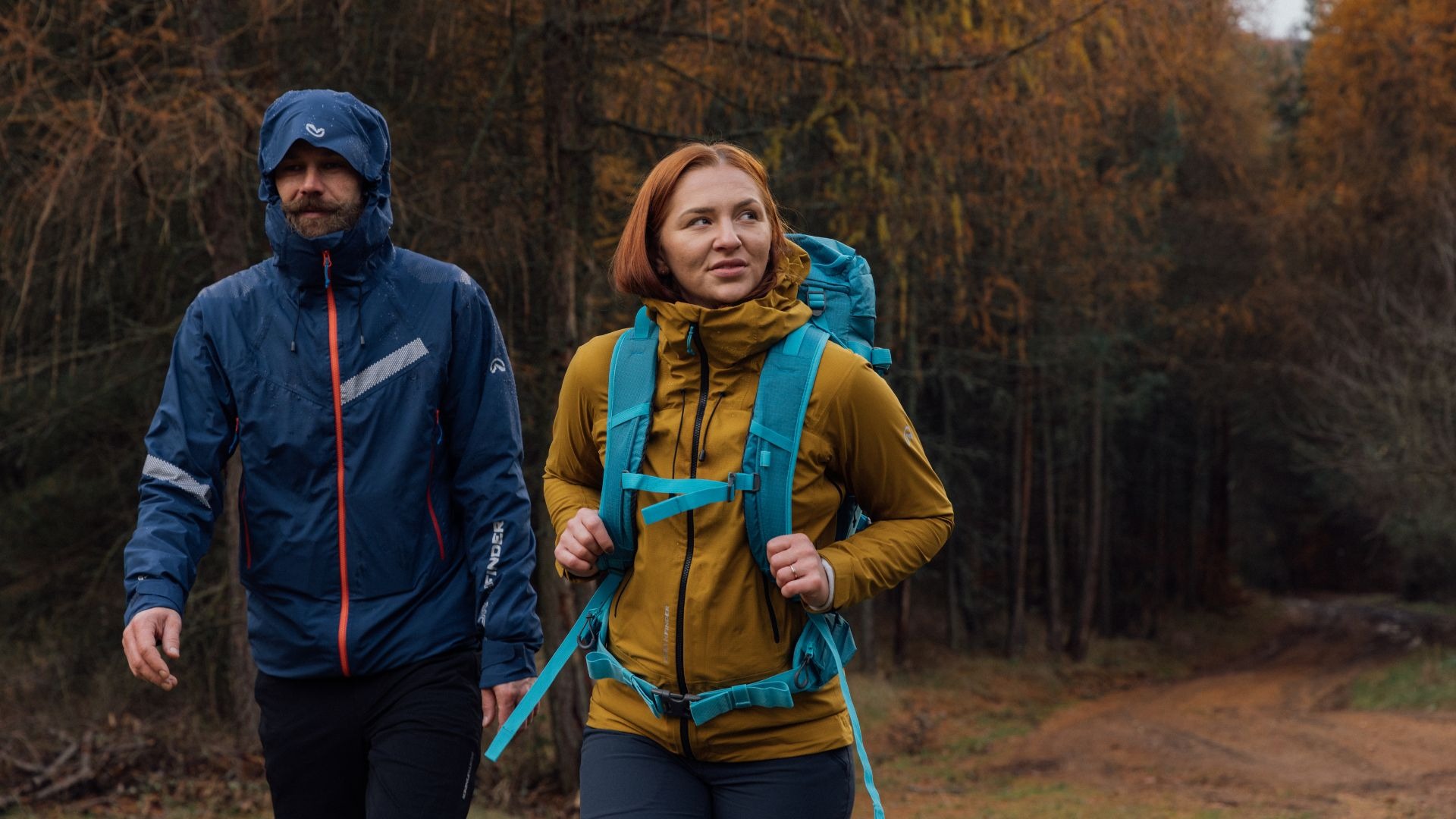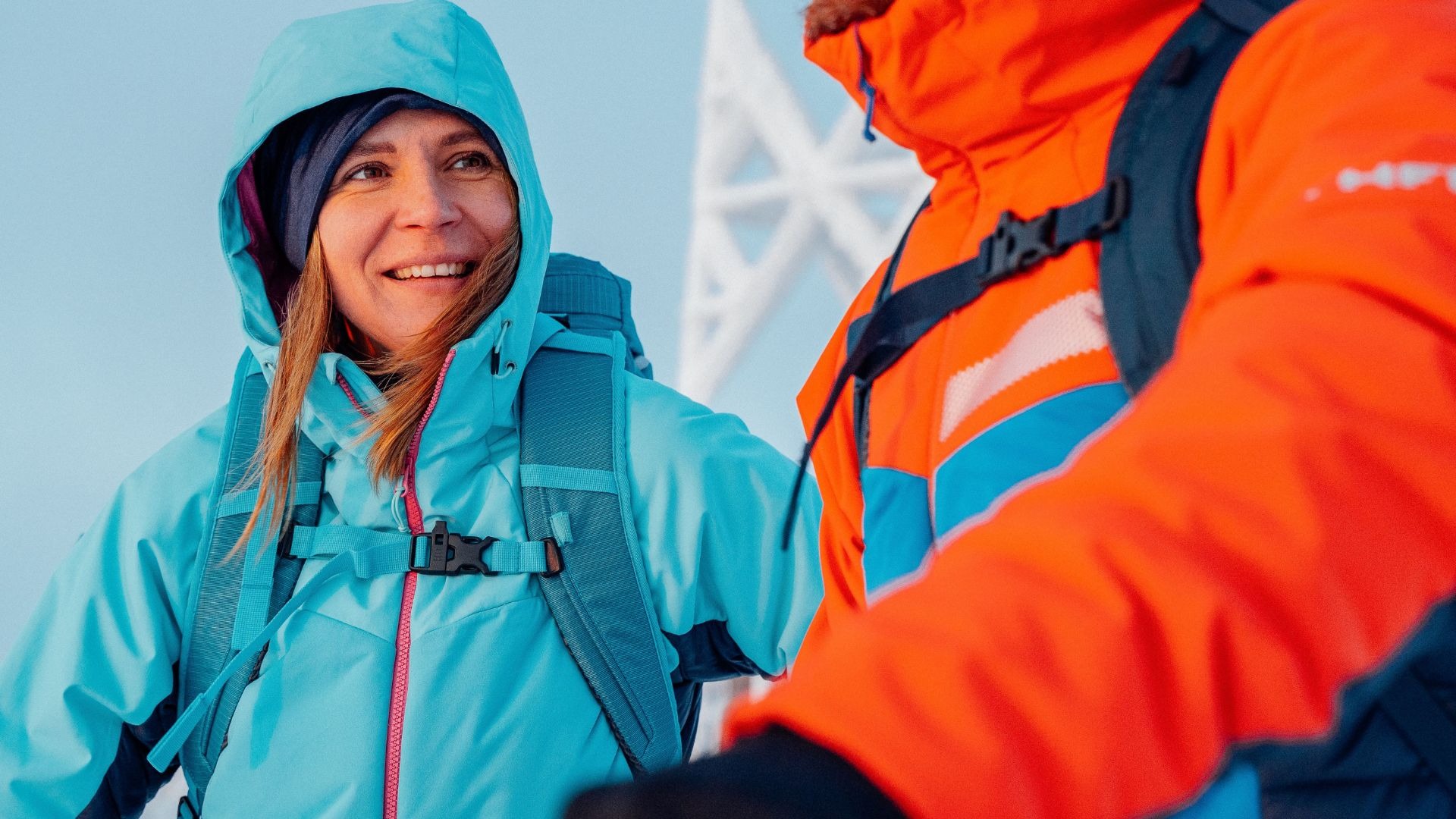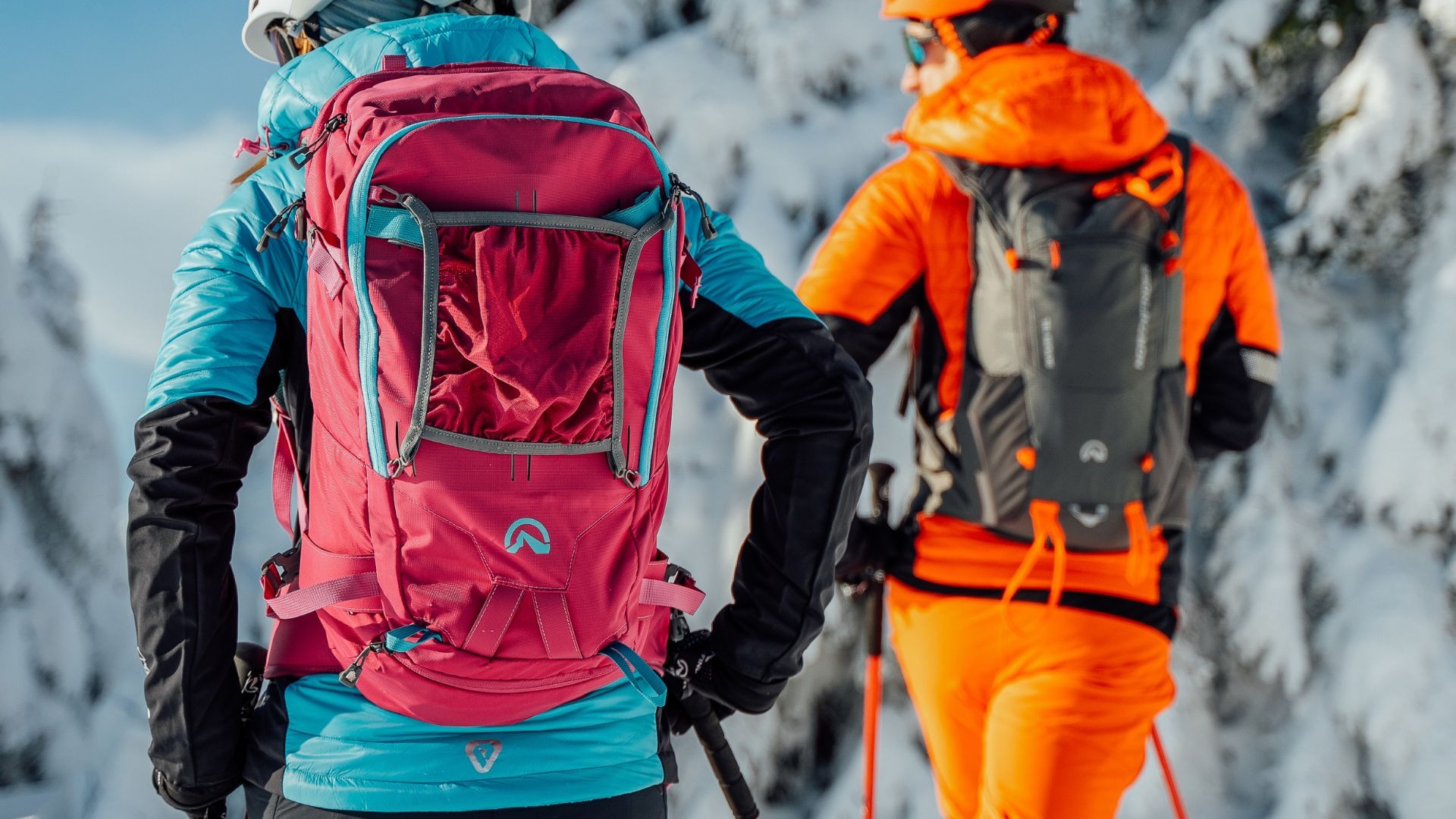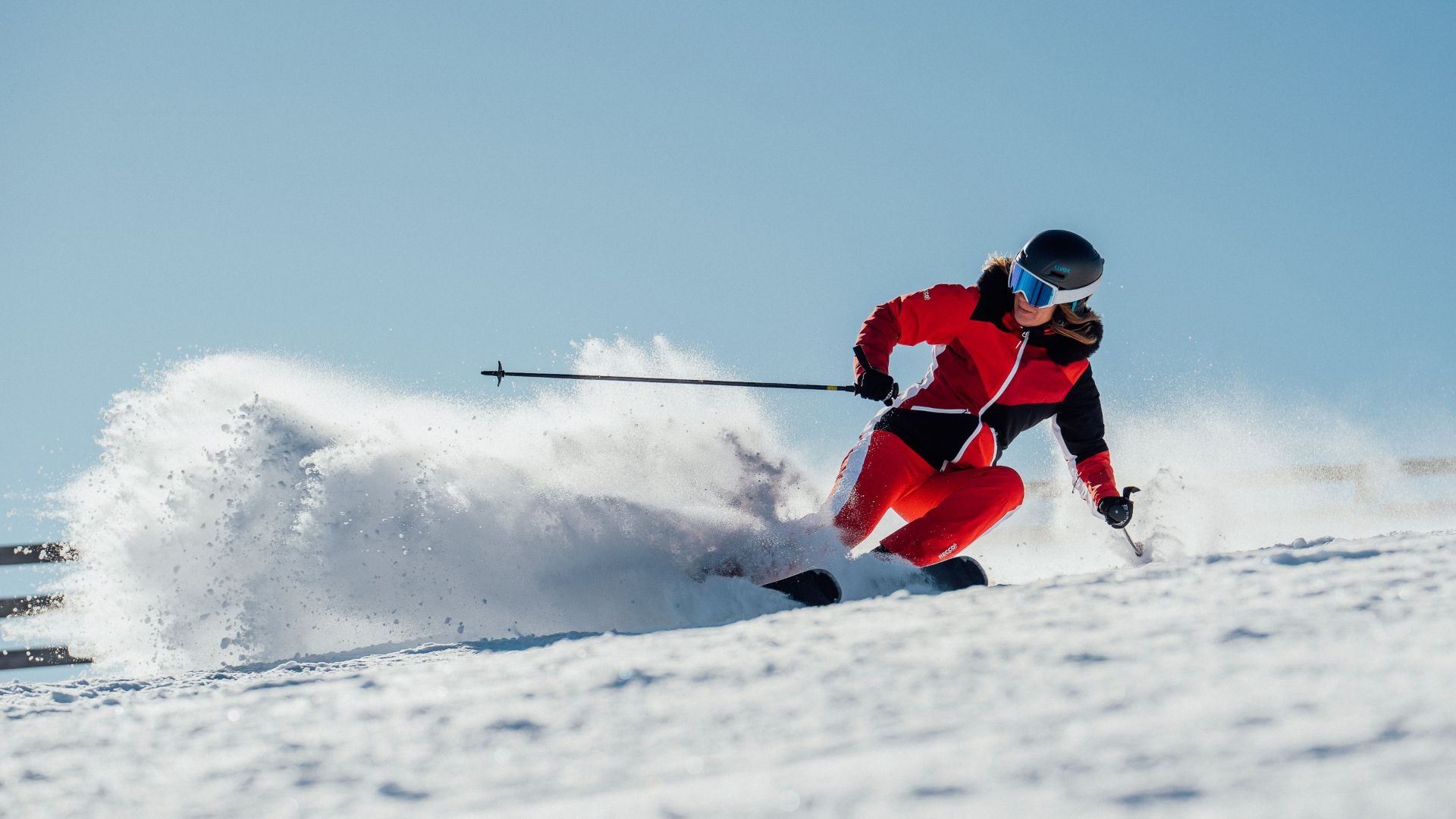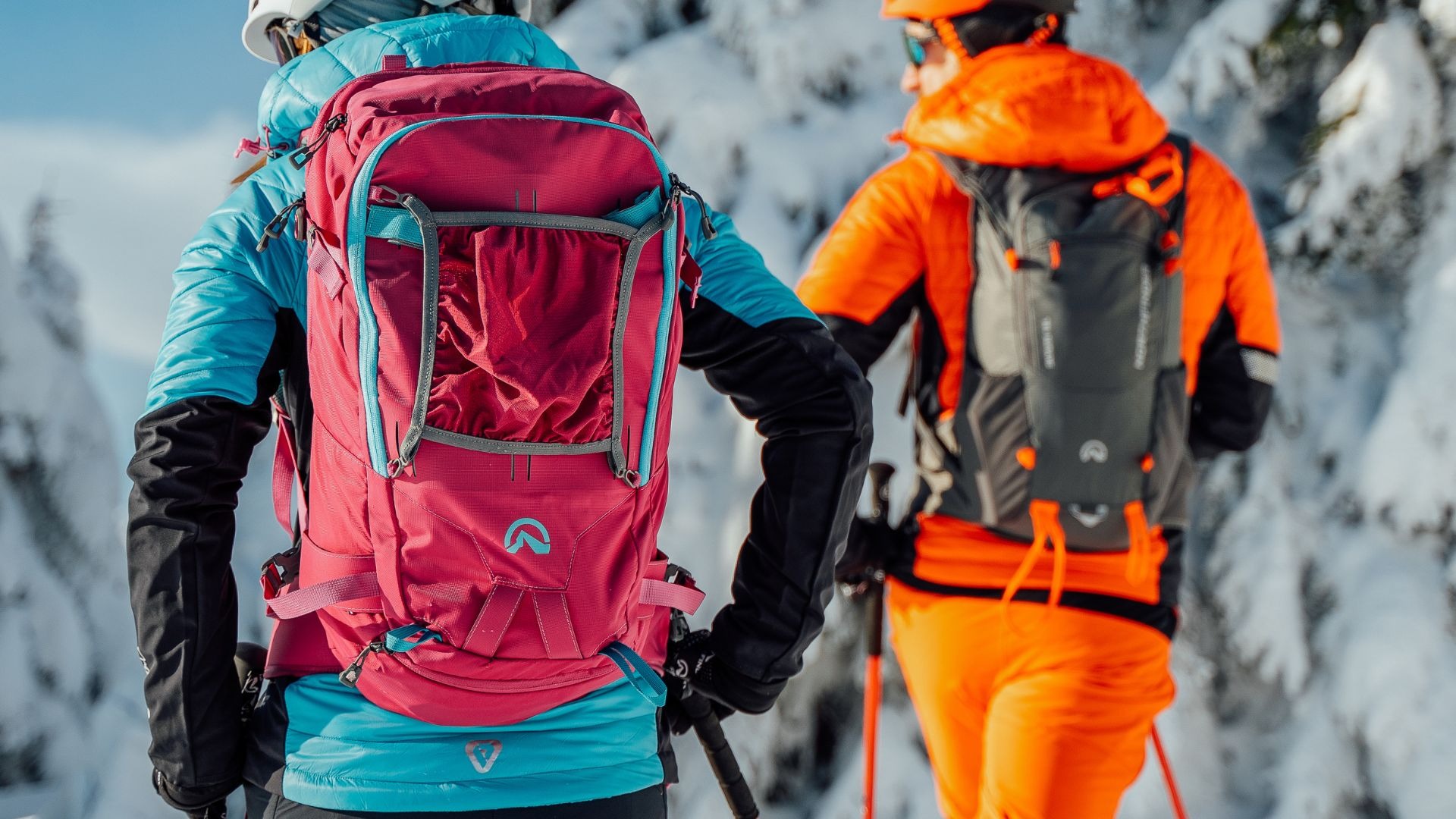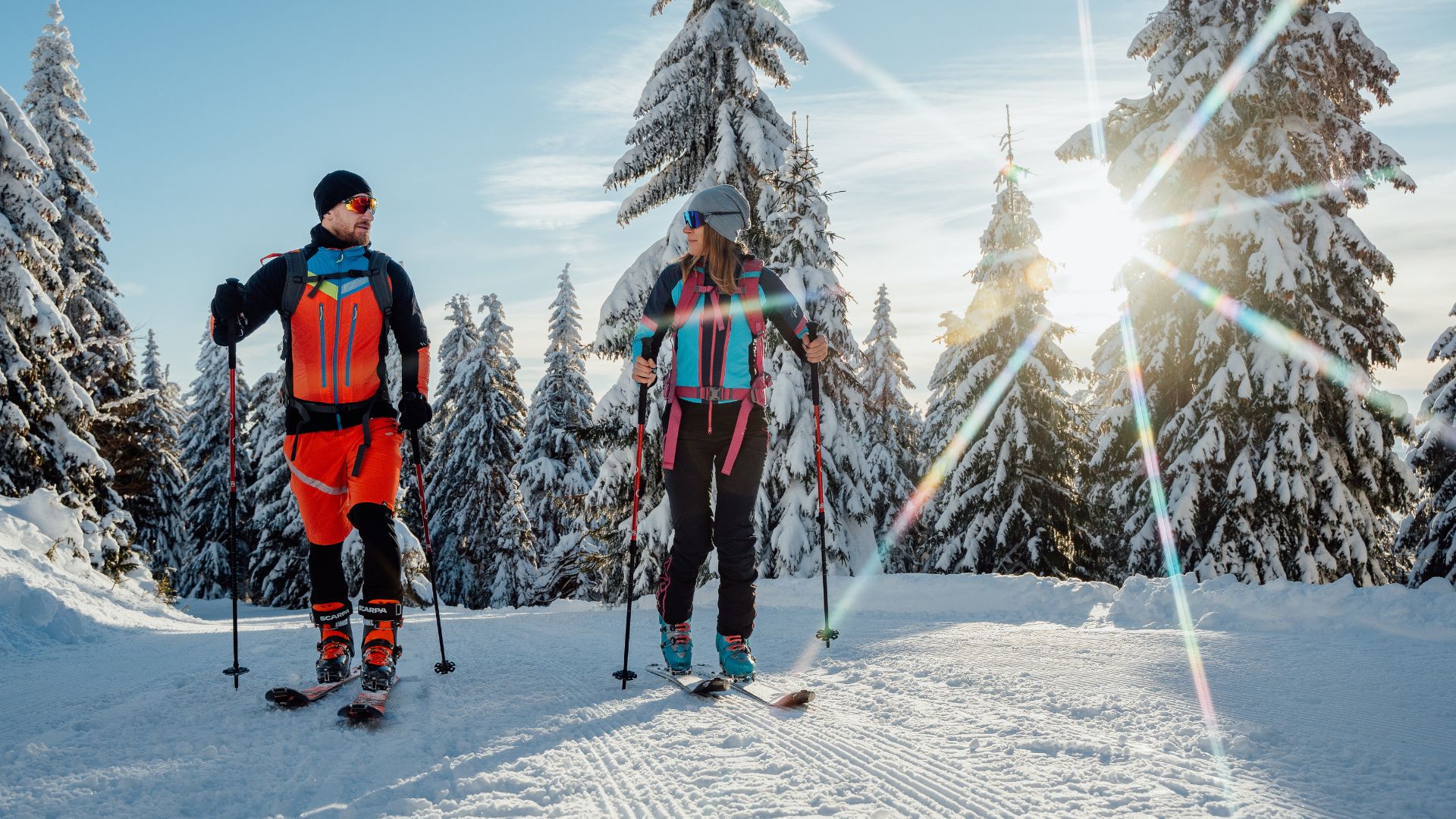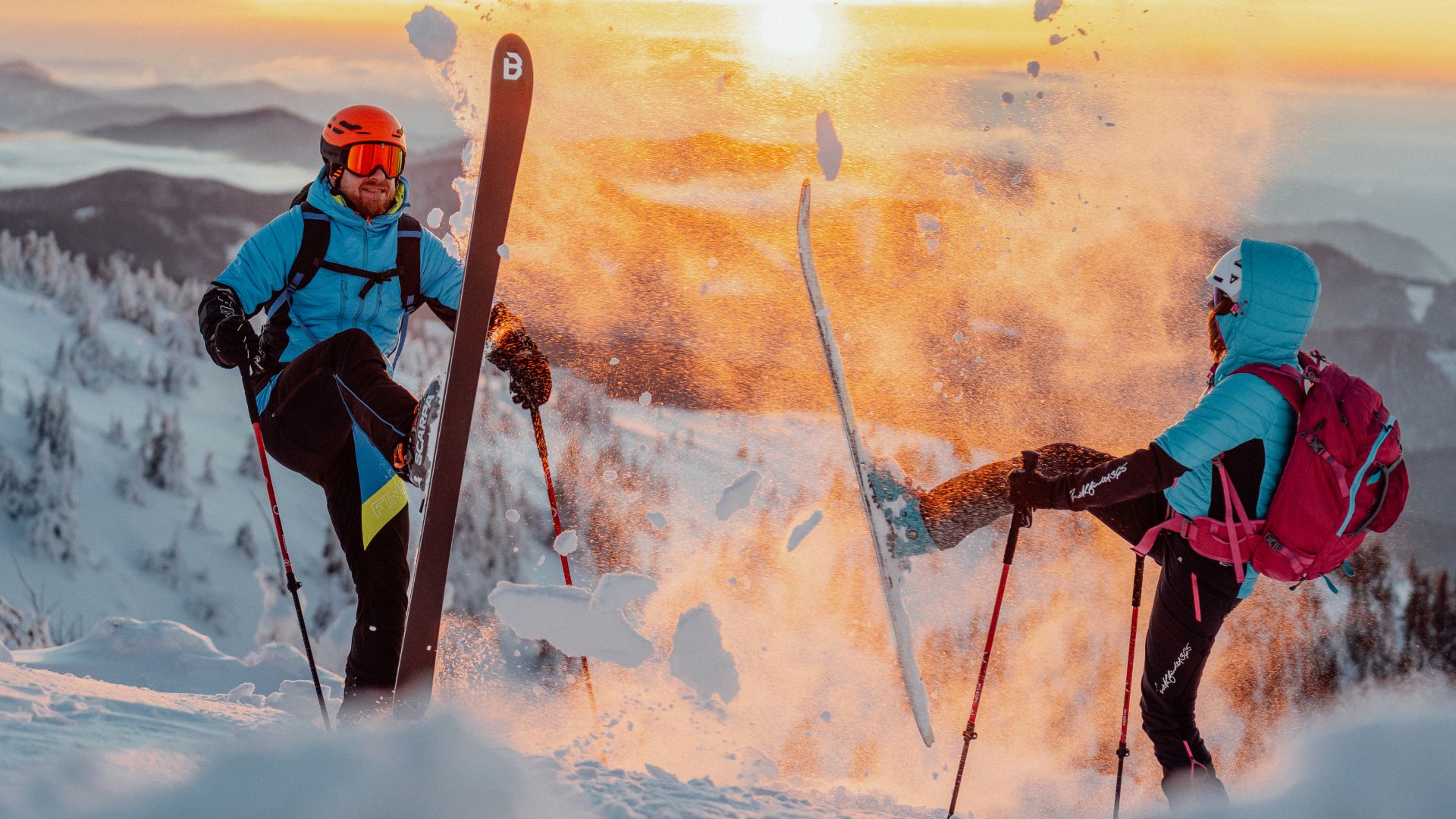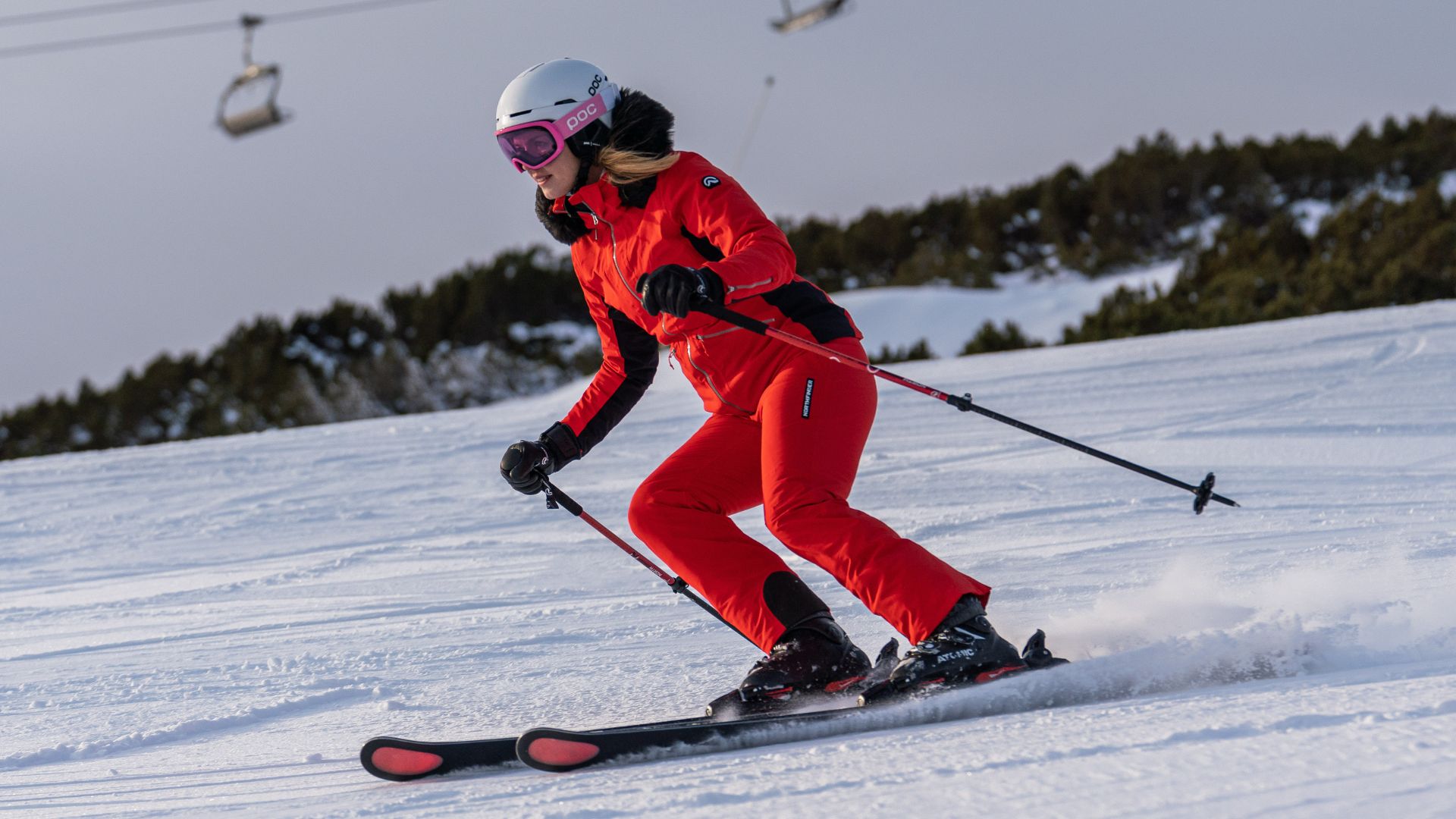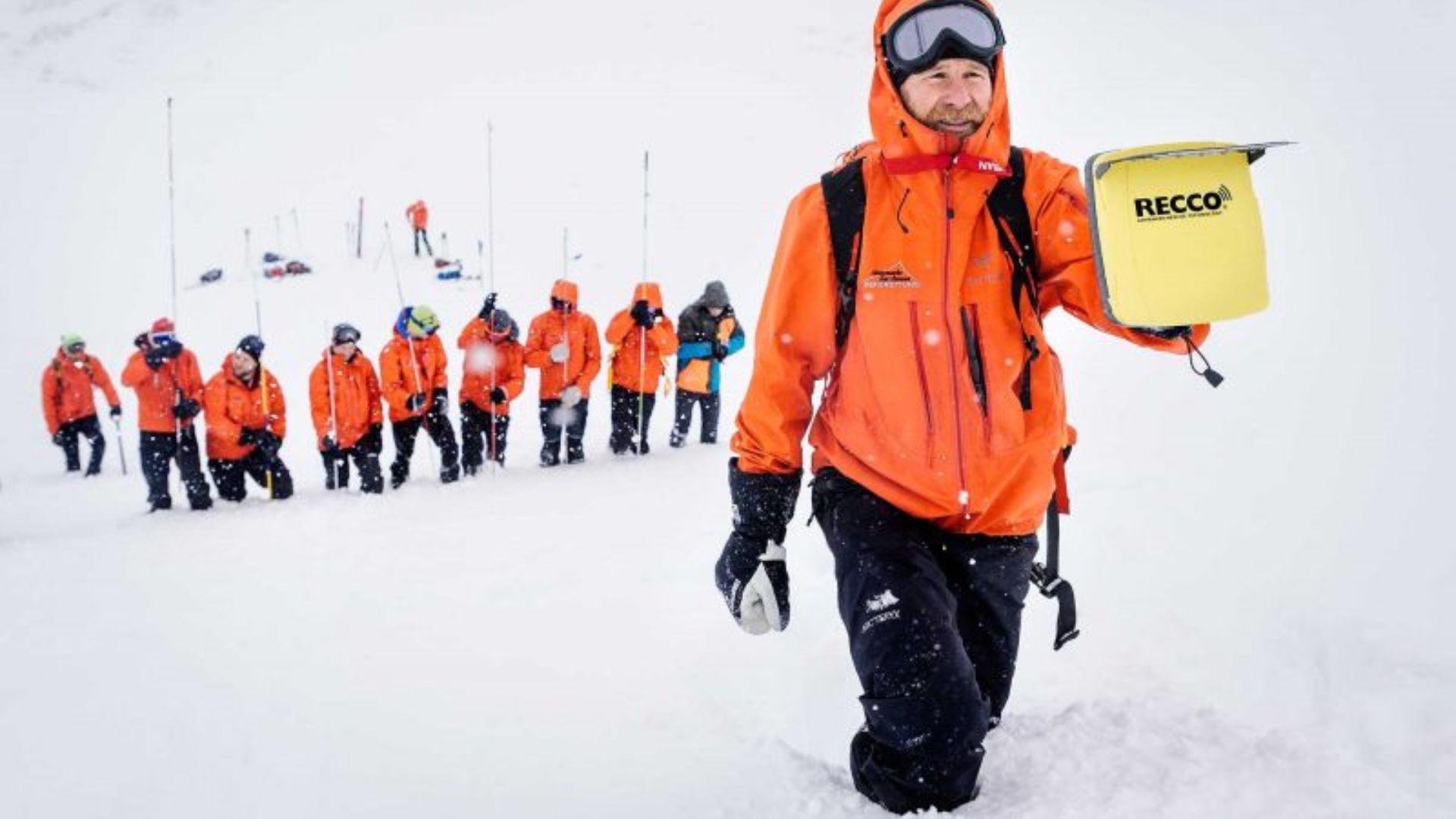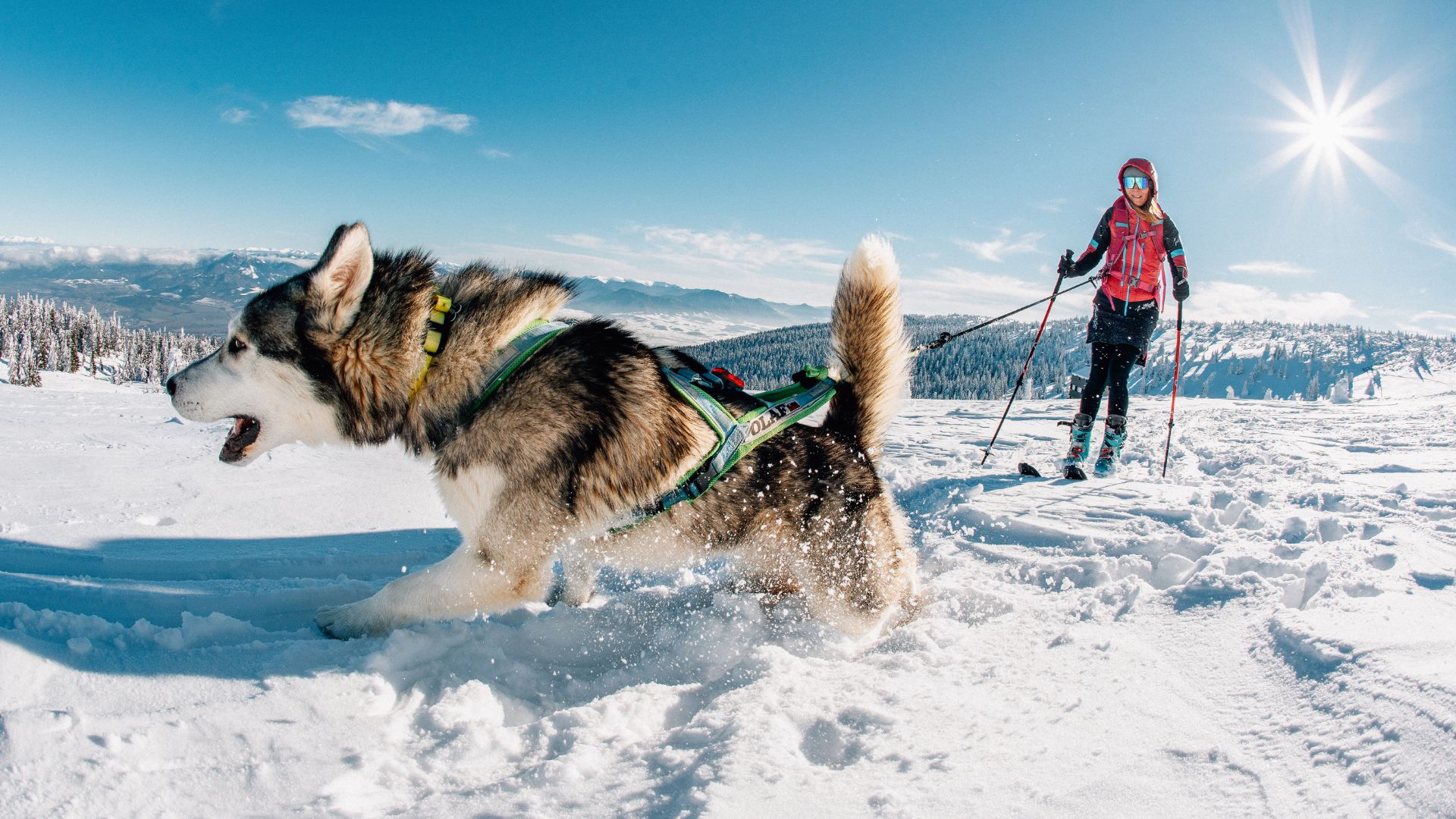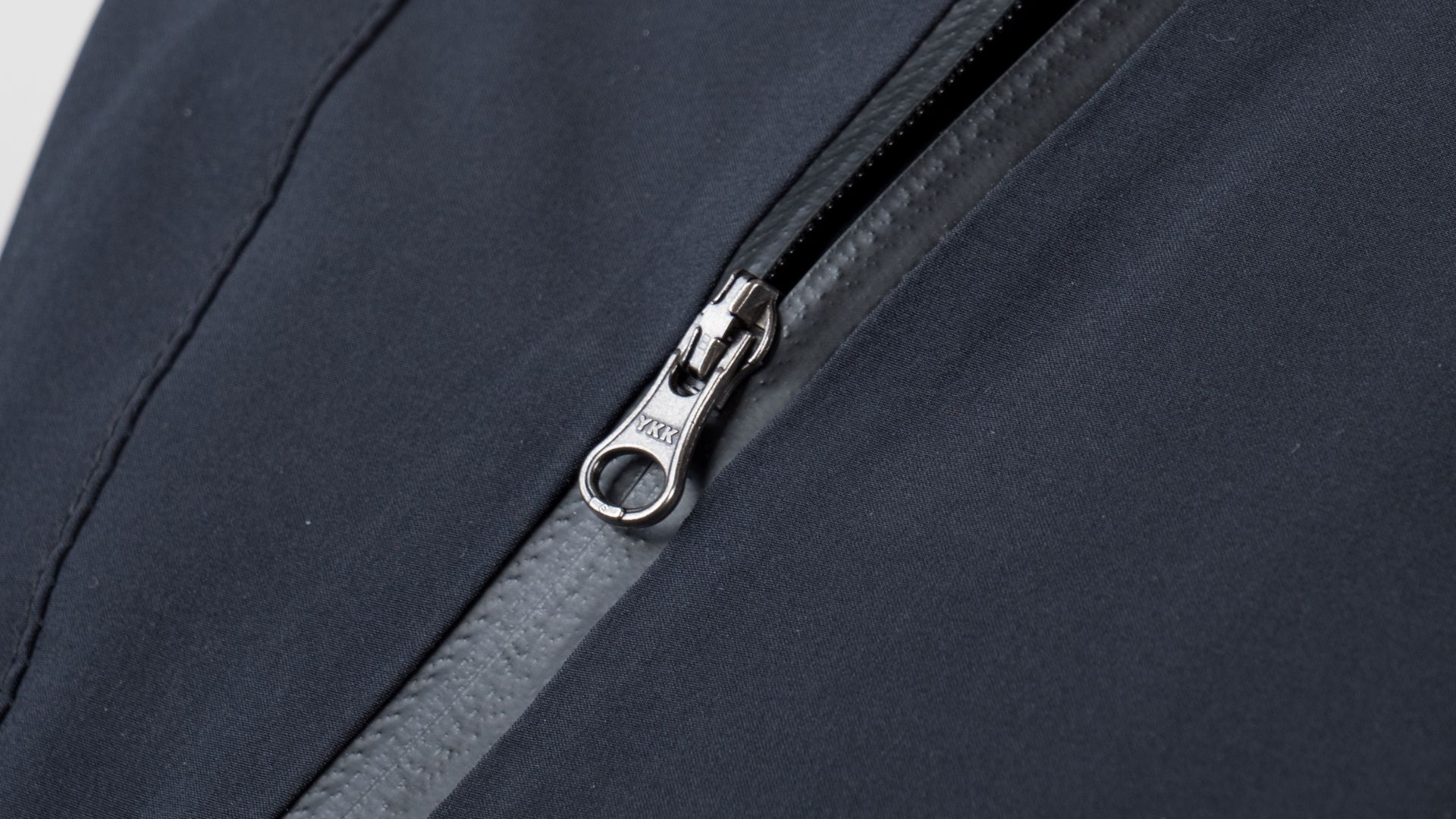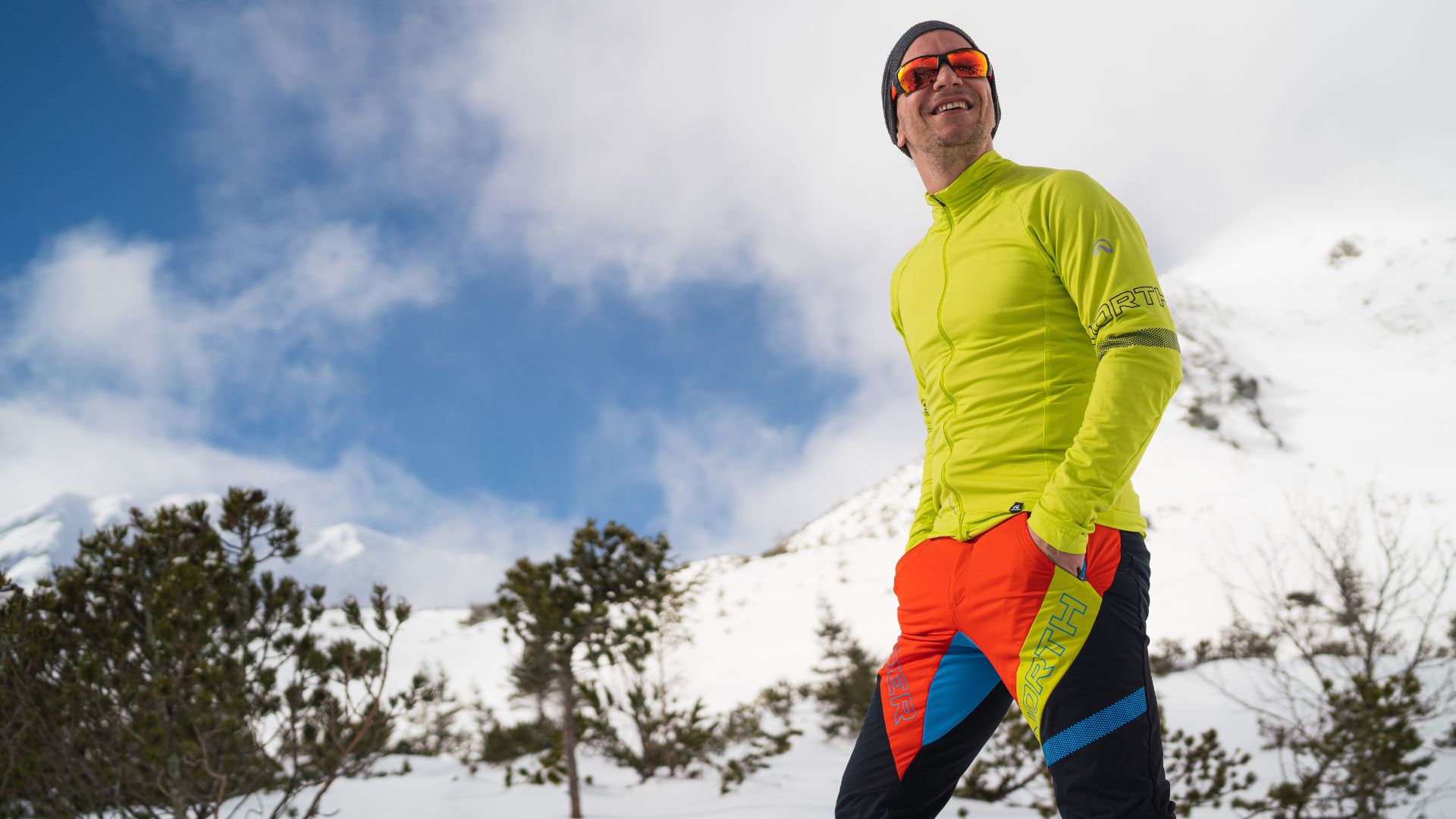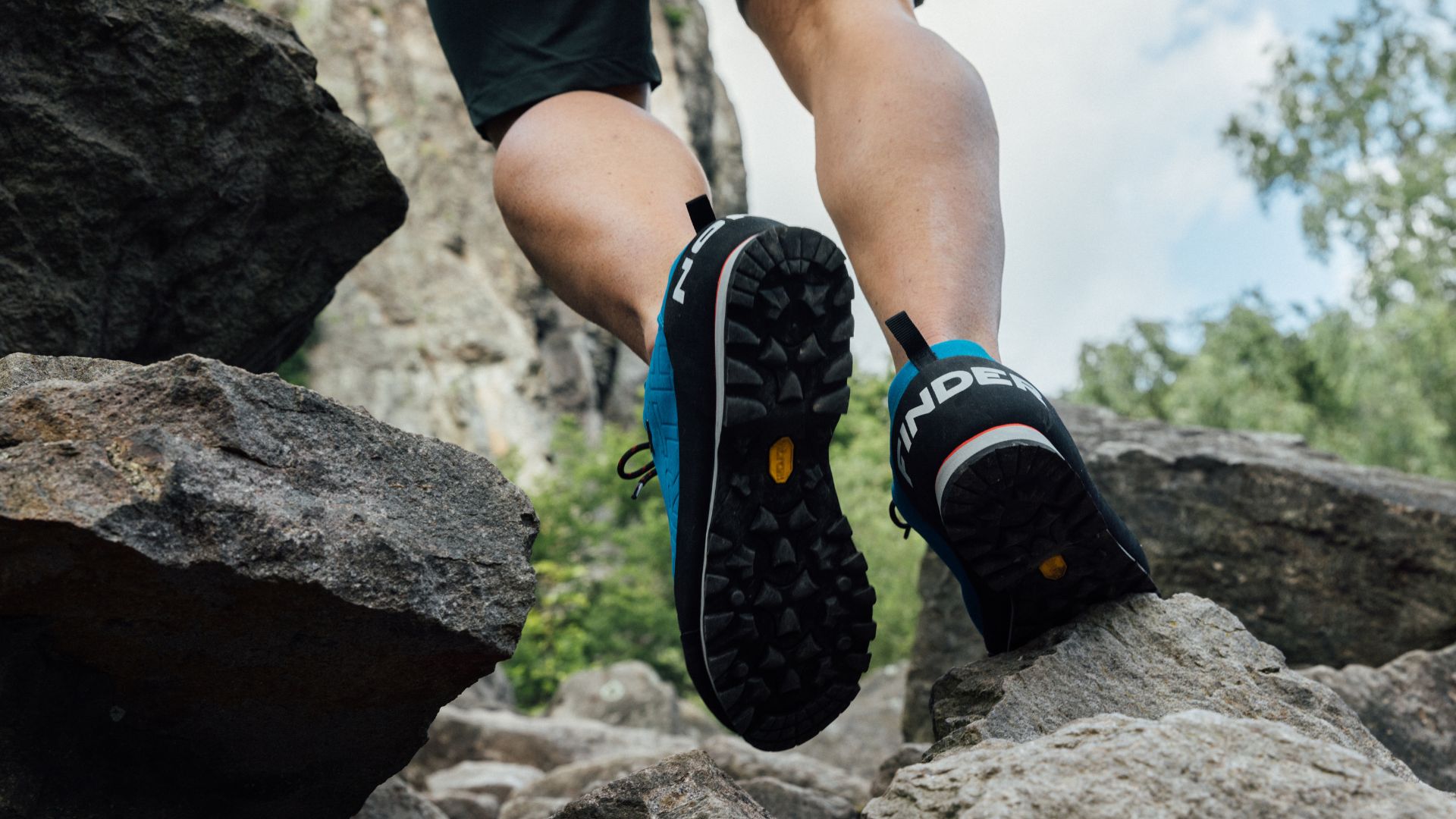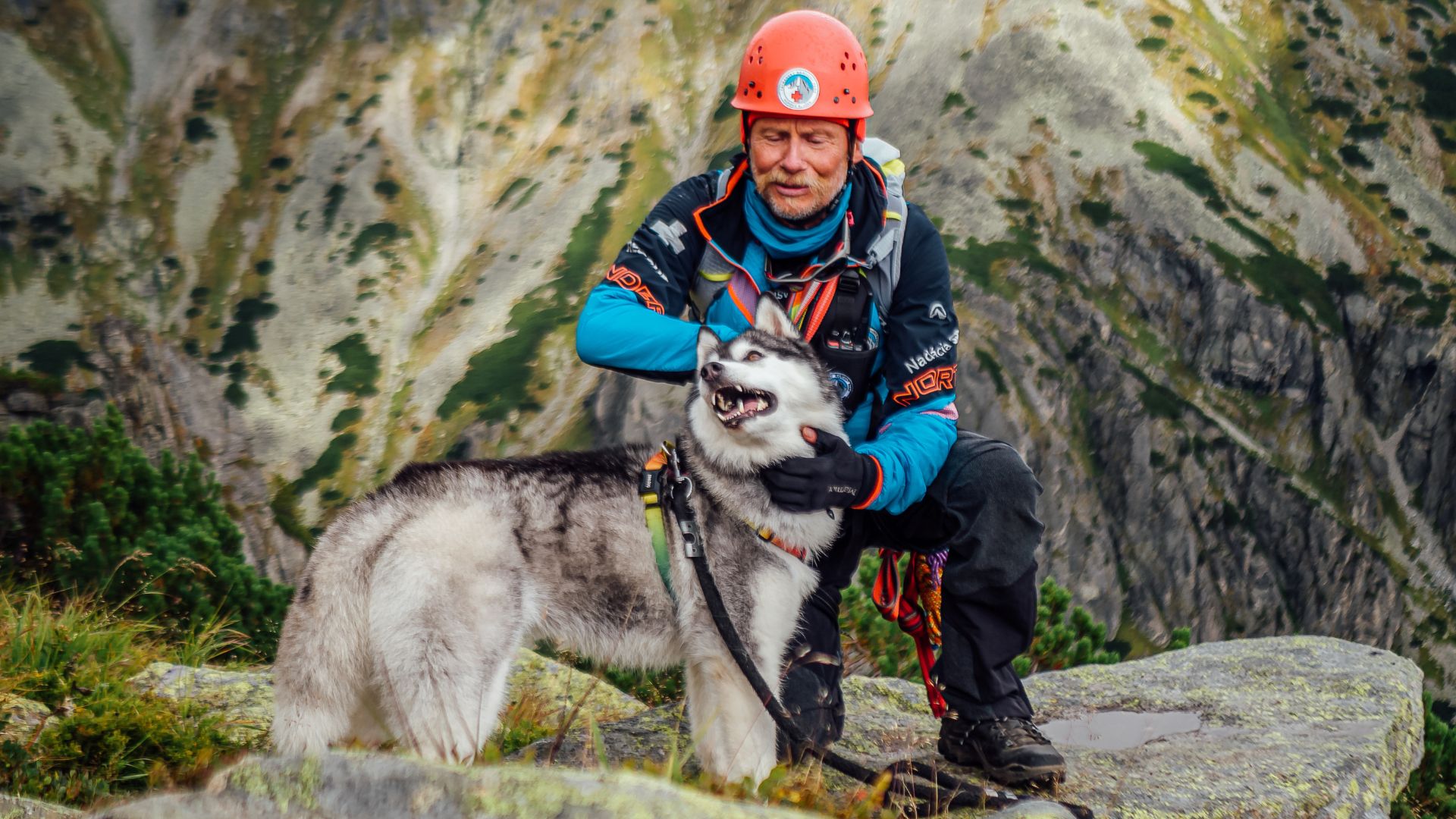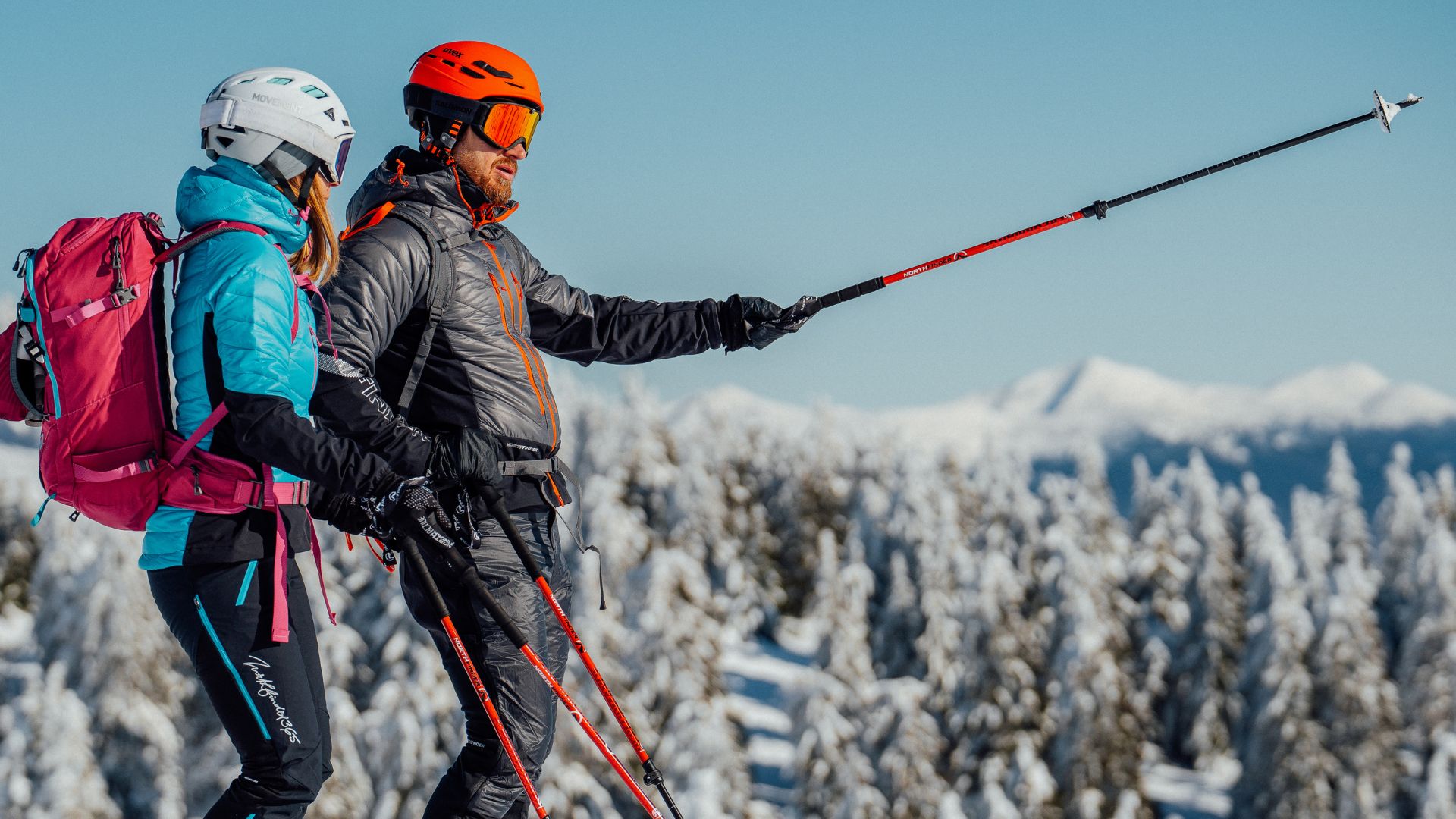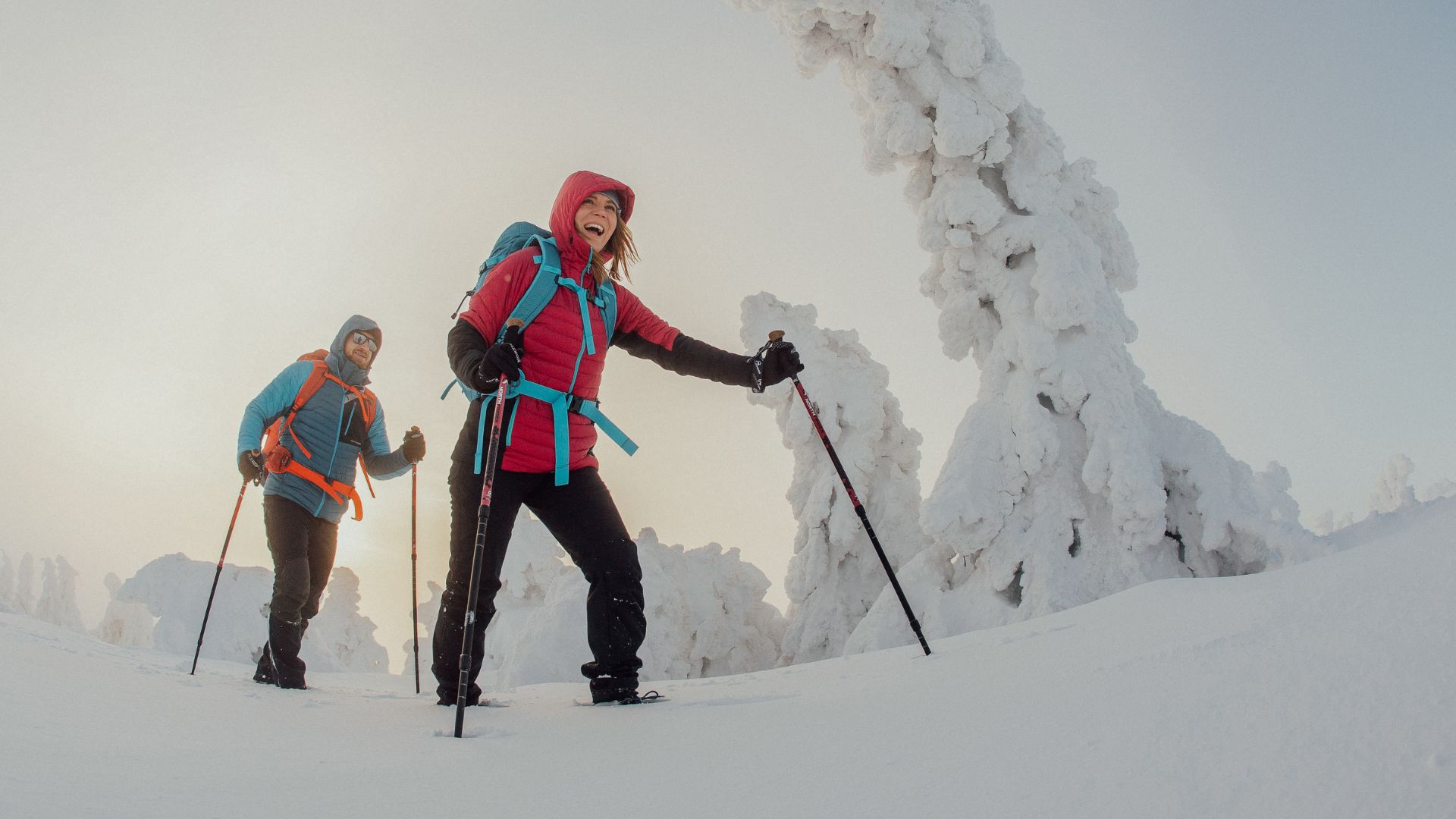How to dress for ski touring: Layers need to work together
Ski touring often includes changing movement intensity. One moment you're climbing steeply, struggling and sweating, while the next you're transitioning to a straight line, waiting for others, or standing at the peak. During more demanding stages, you need your clothes dry from sweat, but not too warm when you’re moving. More relaxing phases need good insulation to resist the cold and strong wind.
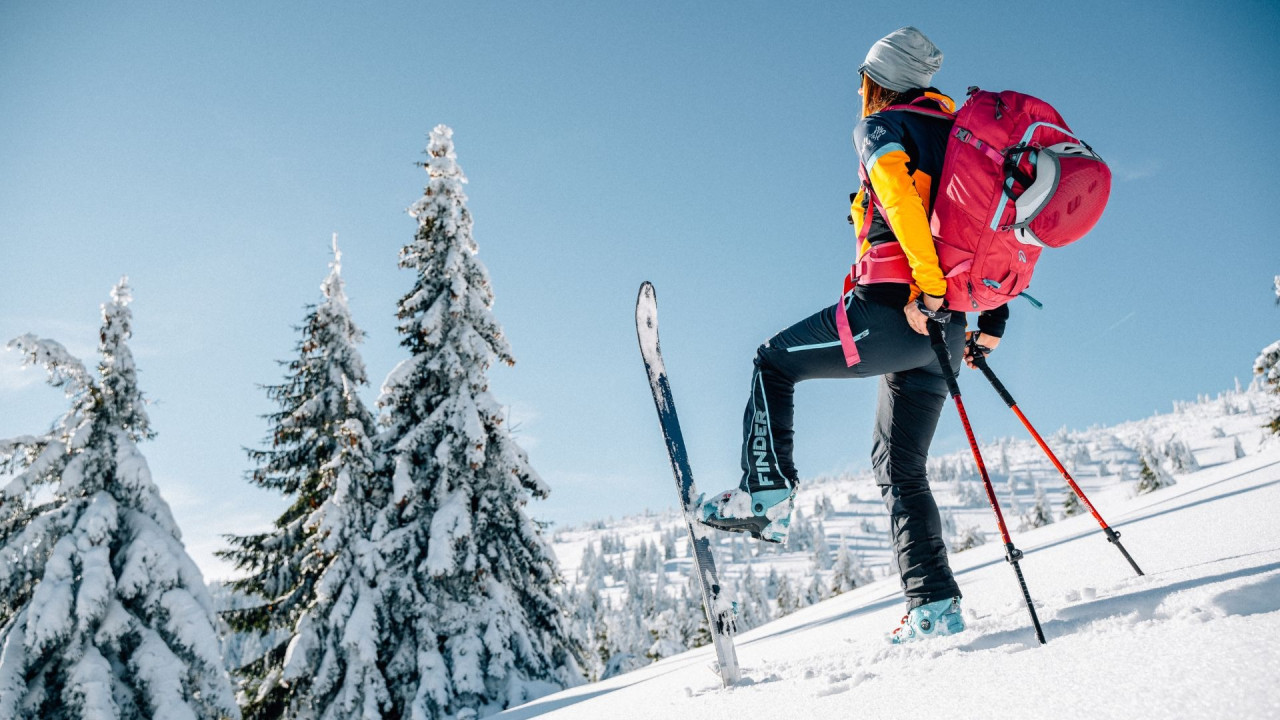
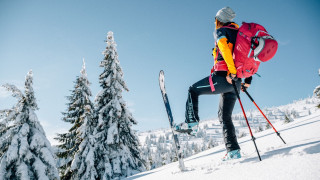
In this article you’ll learn:
What makes ski touring clothing special compared to ski clothing
Which materials are best for ski touring clothing and why
How to layer clothes for ascents and descents
How to choose good ski trousers
What makes ski touring clothing special compared to ski clothing?
Compared to ski clothing, ski touring clothing is lighter and more elastic. While on a normal ski run you spend 80% of time going downhill and the rest waiting or ski lifting uphill, it's the other way around on a ski tour. Ski trousers and jackets are inappropriate for a ski tour. They’d soon become too warm and limit more demanding movements.
Our ski tour clothing utilises hybrid constructions. They combine wind-resistant materials in the front (jackets: mainly chest and shoulders; trousers: mainly thighs and seat) and elastic breathable materials in the back and on the back of trousers. We also use top-quality insulation that is light, breathable, and regulates heat very effectively.
Two or three layers?
While traditional approaches to layering clothing for nature use three layers, hybrid constructions change this principle. They combine the properties of the second and third layers. During intense activity, typically when climbing you can easily skip the middle layer.
APPROACHES TO LAYERING | ||
TRADITIONAL | HYBRID | |
| 1st layer | Thermal underwear | Thermal underwear |
| 2nd layer | Sweatshirt | Hybrid jacket with active insulation and protective zones against wind and moisture |
| 3rd layer | Hardshell/powerful softshell | |
Insulation layer | Warm jacket with insulation filling (Primaloft®) | |
Extra protective layer | Emergency solution: | |
Under layer: Thermal underlayer
This is designed to wick sweat away from the body and into the next layer of clothing, keeping you dry. This underlayer’s material should be pleasant to the touch (as you will wear it directly on your body), while also being elasticated to allow complete freedom of movement. We use Dri-release® DUO material in the under layer of clothing, which is perfectly elastic and dries extremely quickly.
Middle layer: Insulation
This layer will keep you warm. And it has to work well with both the base layer and top layer of clothing, especially for thermo-regulation and wicking away excess moisture. Here too, you will appreciate quick-drying and elastic material, for example Dri-release® DUO, or fleece or microfleece material, which ensures good breathability at high load intensity and keeps the body warm at lower load. You can skip the second layer if you use hybrid outer jackets. Intensity of movement, weather conditions, and how you feel the cold are decisive factors.
Top layer: Protection
Front protects against wind: Northfinder uses Pertex® Quantum - an ultra-light, densely woven fabric with a ripstop structure.
Arms and exposed parts are additionally protected by a membrane or more durable - e.g. softshell - material.
- The back has breathable and elastic material that dissipates excess heat. For example the Blizzard® Thermal Comfort material - a highly elastic, breathable and warm fleece with special density of weaving that maintains internal temperature even when stretched.
Layer for summiting and descending
In addition to the basic two or three layers for climbing to a summit, pack a few more warming items in your backpack. You’ll need them at the top and when descending. Typically these are warm jackets and ski tour warming shorts or skirts, which you can slip over what you’re wearing without a tricky change of clothes.
In extremely bad weather, a hardshell protective jacket will ensure protection from the wind and wet even in very heavy snow or rain. Such jacket must be light, easy to pack, and compact in your ski tour backpack.
Ski tour trousers: Elastic, durable and functional
Layering is your choice for trousers. Some choose long lower thermal trouser under the upper ski tour gear, while others rely on the ski tour trousers simultaneously acting as several layers. Trousers must protect you from the cold, wind and moisture, and allow "breathing" and regulate heat.
Here we also rely on hybrid constructions and chose similar materials as for jackets: light membranes, active insulation, breathable fleece panels, and abrasion-resistant technologies for greater durability. High-quality ski tour trousers have quality materials and features, as well as:
Elasticity - ski tour trousers must be elastic to ensure optimal mobility.
Reinforced lower parts of trousers - to protect from ski edges and crampons.
- Detachable stretch cuffs - ensure a perfect connection with ski boots and prevent snow and cold getting inside.



